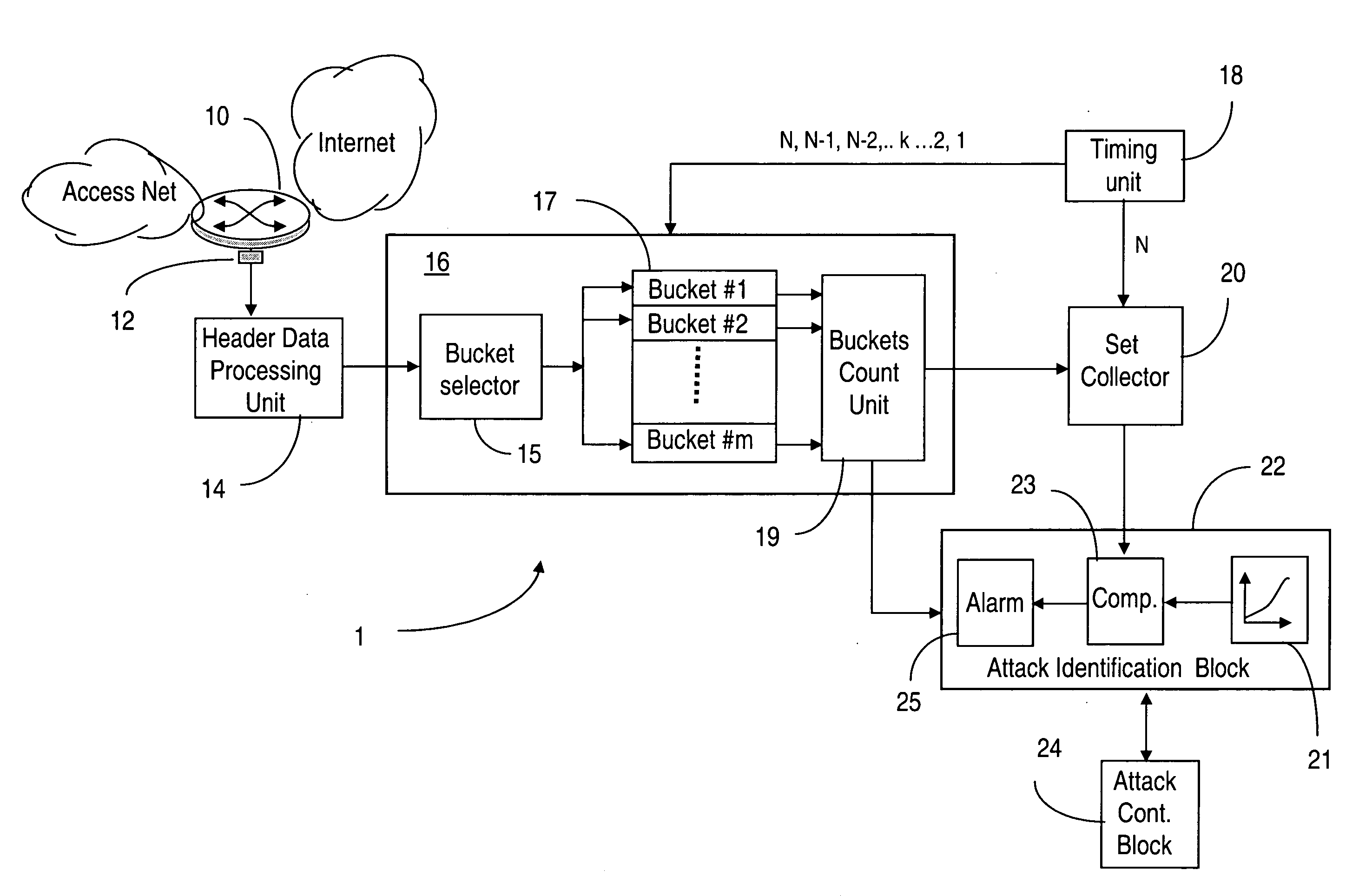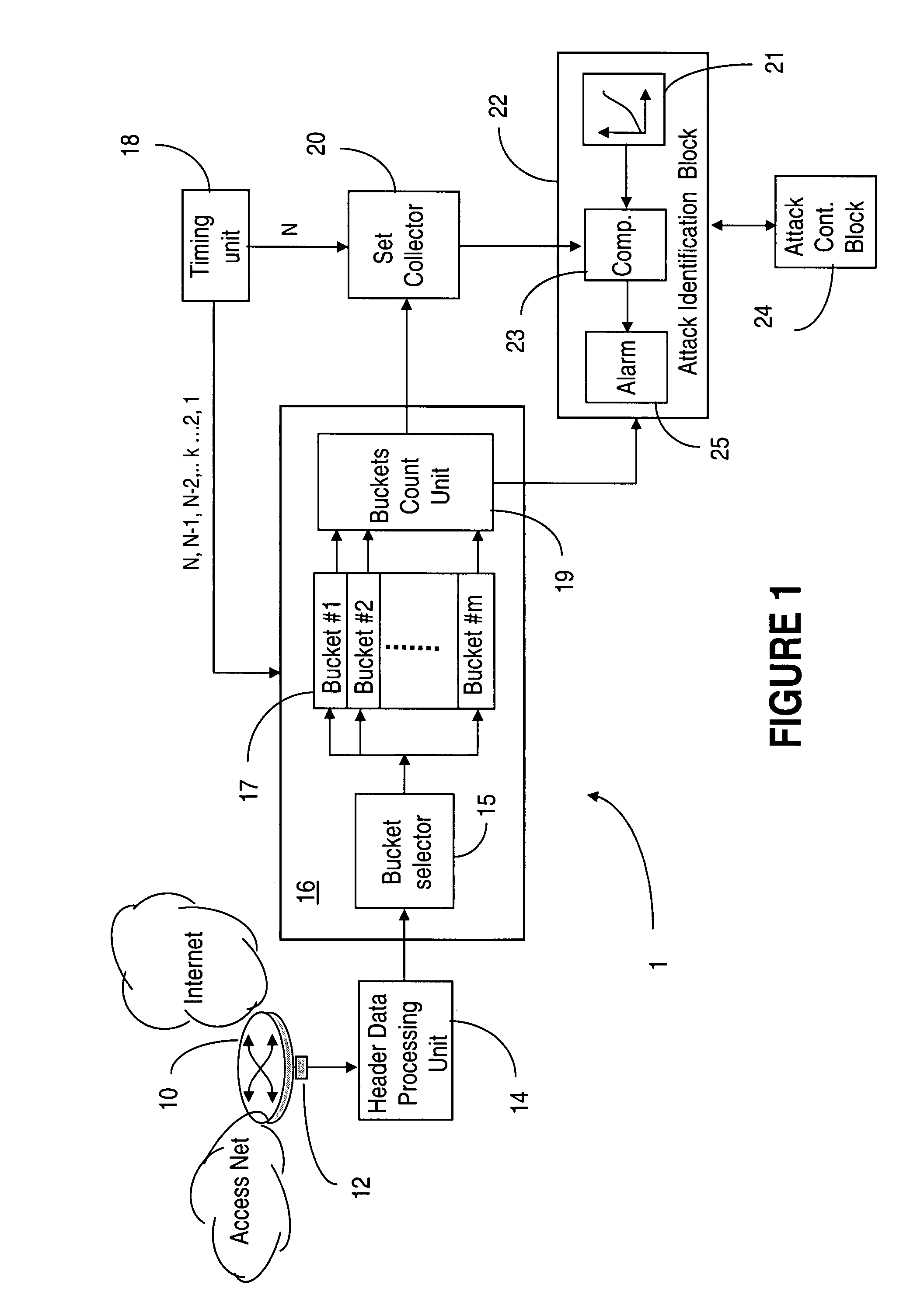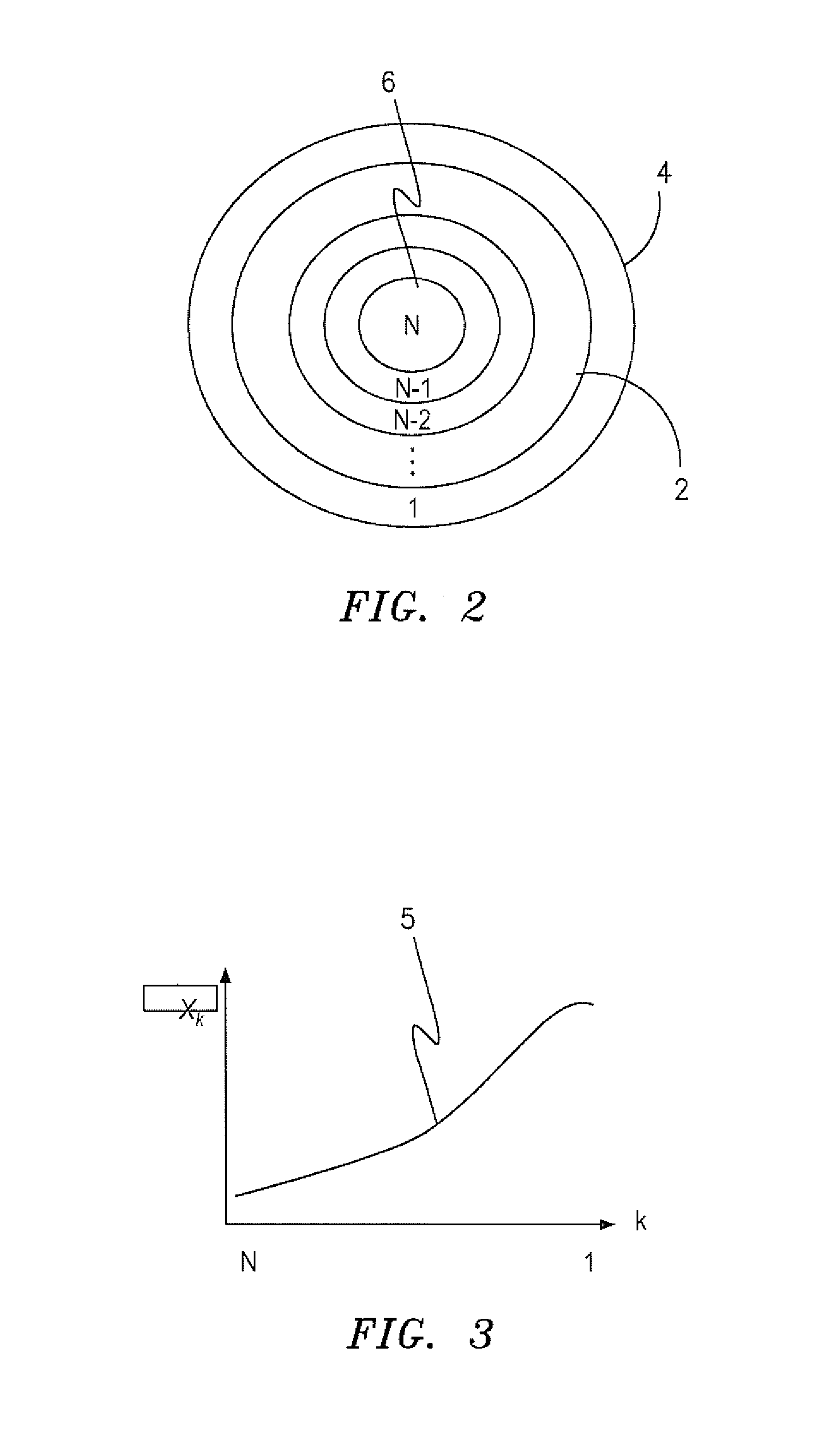Worm detection by trending fan out
a fan out and worm technology, applied in the field of communication networks, can solve the problems of no one being able to achieve the final goal, network worms are regarded as a growing threat, and serious damage both to the network/service provider and users, so as to minimize false positives, minimize impact, and facilitate installation
- Summary
- Abstract
- Description
- Claims
- Application Information
AI Technical Summary
Benefits of technology
Problems solved by technology
Method used
Image
Examples
Embodiment Construction
[0023]The invention is directed to a system for detecting propagation of stealthy, slow probing worms.
[0024]In this specification, units through which digital data are transmitted from one point to another over a communication path are referred to generically as Protocol Data Units (PDU's). This term includes data units formatted according to various transmission protocols; PDU's can be IP packets, TCP packets, frames, etc. The term “fan-out” is used for the outgoing PDU's. As well, the system of the invention can be installed in any area of the network, with an adequate sizing for the targeted equipment (i.e. more flows implies larger amount of memory, etc.)
[0025]The system of the invention collects for each source, during a predetermined time window (TW), a representation of the set of destinations to which that source has sent packets. While a complete list of the IP addresses of the destinations can be kept for each packet, such a list would consume system resources and as such ...
PUM
 Login to View More
Login to View More Abstract
Description
Claims
Application Information
 Login to View More
Login to View More - R&D
- Intellectual Property
- Life Sciences
- Materials
- Tech Scout
- Unparalleled Data Quality
- Higher Quality Content
- 60% Fewer Hallucinations
Browse by: Latest US Patents, China's latest patents, Technical Efficacy Thesaurus, Application Domain, Technology Topic, Popular Technical Reports.
© 2025 PatSnap. All rights reserved.Legal|Privacy policy|Modern Slavery Act Transparency Statement|Sitemap|About US| Contact US: help@patsnap.com



